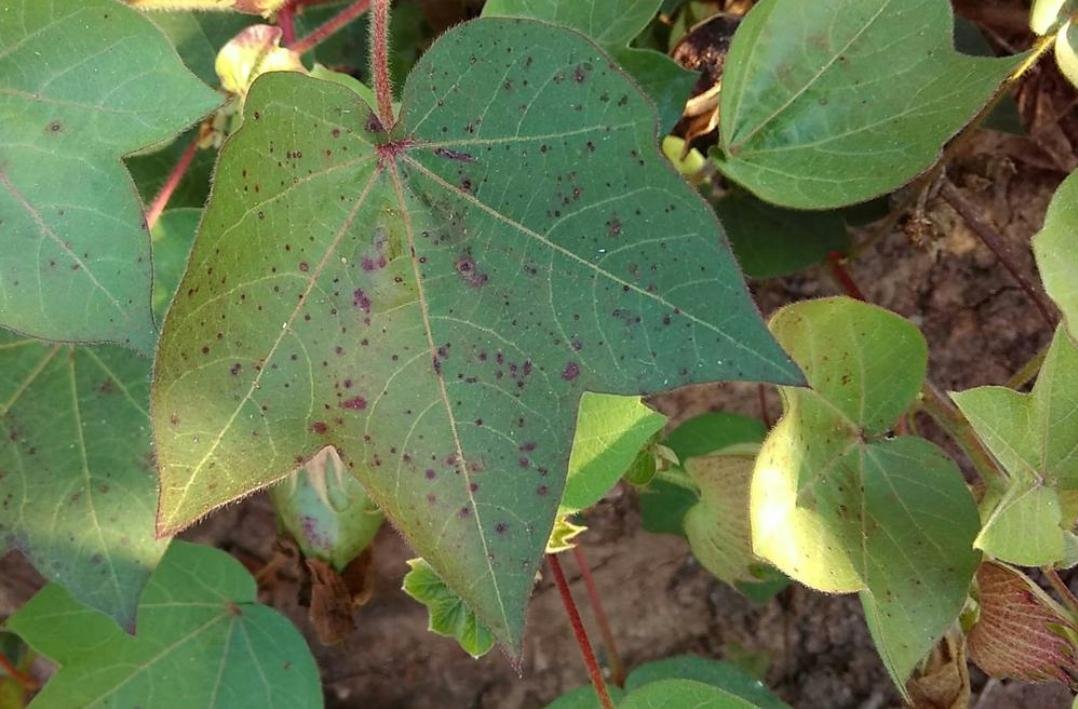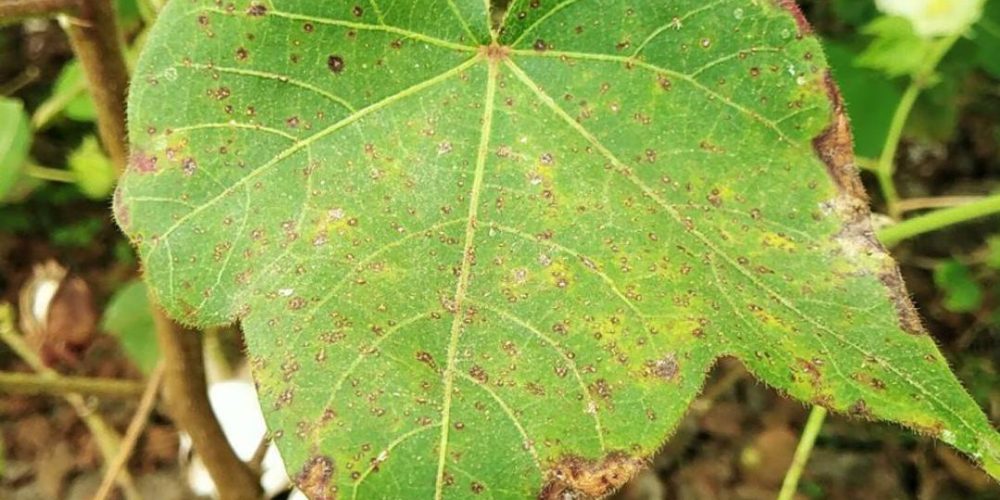Table of contents of the article
ToggleBacterial blight in cotton is considered one of the important diseases that affects the cotton crop globally. Therefore, we at the World of Plants website have explained the causes of bacterial blight in cotton, its symptoms, and the preventive measures that must be followed.
What is bacterial blight in cotton?
Angular Leaf Spot of Cotton is one of the important diseases affecting the cotton crop globally, as it can cause losses of up to 10% of production. The severity of symptoms and losses is affected by environmental conditions, which may increase the percentage of crop loss, especially in warm and rainy climates.
Bacterial blight in cotton occurs when infected with the bacterium Kanthomonas campestris pv. Malvacearum
Symptoms of bacterial blight in cotton
Early infection mainly arises from infection of the seedling (a seedling is a seedling or a seedling is a small plant in its spore stage, emerging from its embryonic stage in the seed) due to contamination or infection of the seeds originally with bacteria, and the infection is represented by the appearance of small, round water spots on the lower surface of the cotyledons and on the stems of the seedlings. Young after emergence. In this case, the infection often leads to the death of the affected parts or the seedlings as a whole. As for established plants, angular spots appear on the leaves with red to brown edges.
The angular shape of the spots is due to the inability of bacteria to invade the tissues of vascular bundles with thickened secondary walls. The spots can extend along the main leaf veins as the infestation progresses, potentially infecting leaf petioles and stems, causing premature leaf drop and black leg.
Development of bacterial blight in cotton
The infection may develop into the emergence of cavities (cankers), which represent the bark tissue and dead skin surrounding the stem or branch, and extend inward, leading to the death of the upper parts. White, waxy crusts containing bacteria may form on old spots that form on the leaves and caries. Cotton nuts can also be infected, developing watery spots that develop into circular spots and then into dark brown to black sunken sores.
Infected cotton nuts rot, causing the lint to become discolored and the seeds inside to rot, and under the right conditions the nuts can fall off or become deformed.
The bacteria overwinter on or in seeds, on cotton offspring, and on undecomposed remains of infected plants in the soil for two years (Koenning, 2004).
At least 16 major genes responsible for resistance against the bacteria Xanthomonas campestris pv, malvacearum were identified in cotton plants, and 10 virulence genes were isolated from the avrBs3 group in bacteria C. pv. Malvacearum X. It is present in all types of bacteria Brinkerhoff, 1970; Yang er) Xanthomonas campestris 1996,.al). These genes are activated in the formations of the plant and these bacteria in a gene-to-gene manner between the resistance genes in the host and the non-virulence genes in the bacteria.

Control of bacterial blight in cotton
- Use bacteria-free seeds. Removing the cotton strain from seeds by acid treatment kills the bacteria and greatly reduces their spread (Silvertoth, 2001 & Olsen).
- Cultivation of resistant varieties.
- Avoid handling plants in humid conditions.
- Dispose of infected plant remains.
- Agricultural rotation when the resistant variety is not available (Koenning, 2004).
Preventive measures for bacterial blight in cotton
- Plant high-quality, disease-free seeds or seeds that have been passed through acid treatment.
- Using blight-resistant varieties is the most effective way to avoid the disease.
- Scout the field for infected plants, remove them and remove some of the plants next to them.
- Keep the plant canopy as light and open as possible to reduce humidity and promote leaf drying.
- Do not plant or move equipment between fields when foliage is wet.
- Avoid using overhead irrigation systems.
- Harvest infected fields as soon as possible to avoid further losses.
- Avoid using overhead irrigation systems.
- Bury the remains of infected plants deep in the soil to speed up decomposition.
- Plan and practice crop rotation with non-susceptible plants.
In conclusion, we would like to note that we, at the world of plants website, offer you all the necessary services in the world of plants, we provide all farmers and those interested in plants with three main services::-
- Artificial intelligence consulting service to help you identify diseases that affect plants and how to deal with them.
- Blog about plants, plant diseases and care of various crops ... You are currently browsing one of her articles right now.
- An application that provides agricultural consultations to clients, as well as a service for imaging diseases and knowing their treatment for free – Click to download the Android version from Google Play Store، Click to download the IOS version from the Apple App Store.
References
Angular Spot Disease of Cotton (Bacterial Blight of Cotton) – Galaxy website




